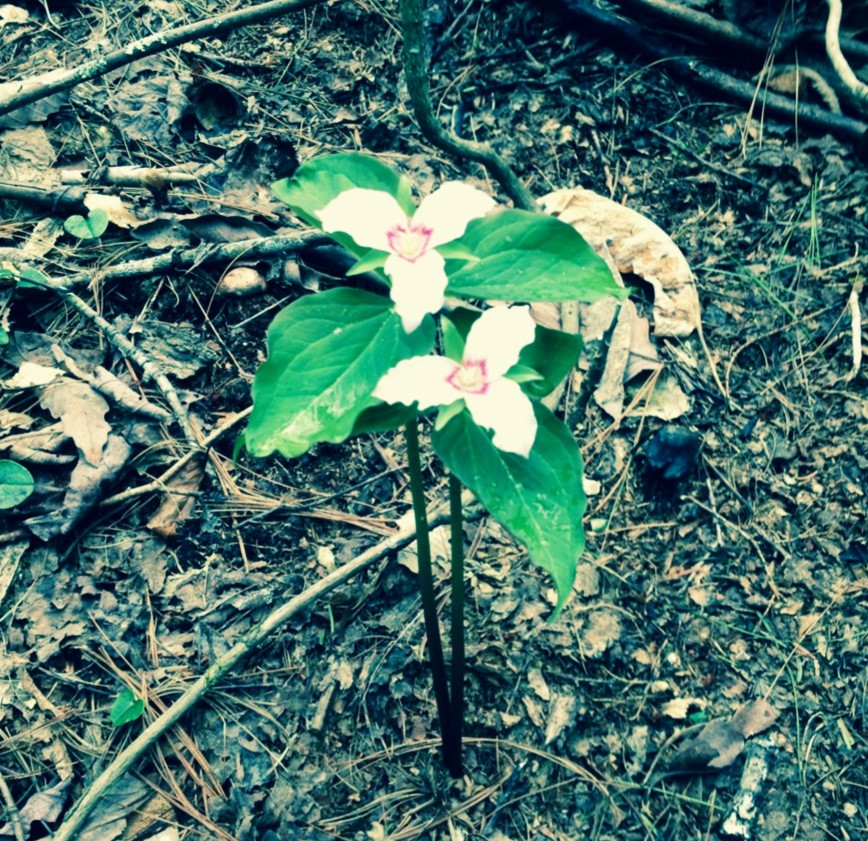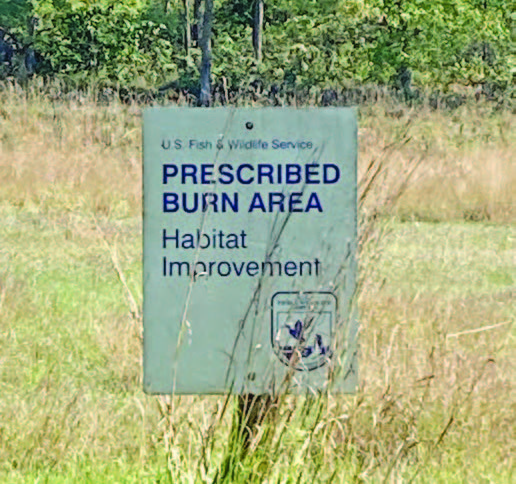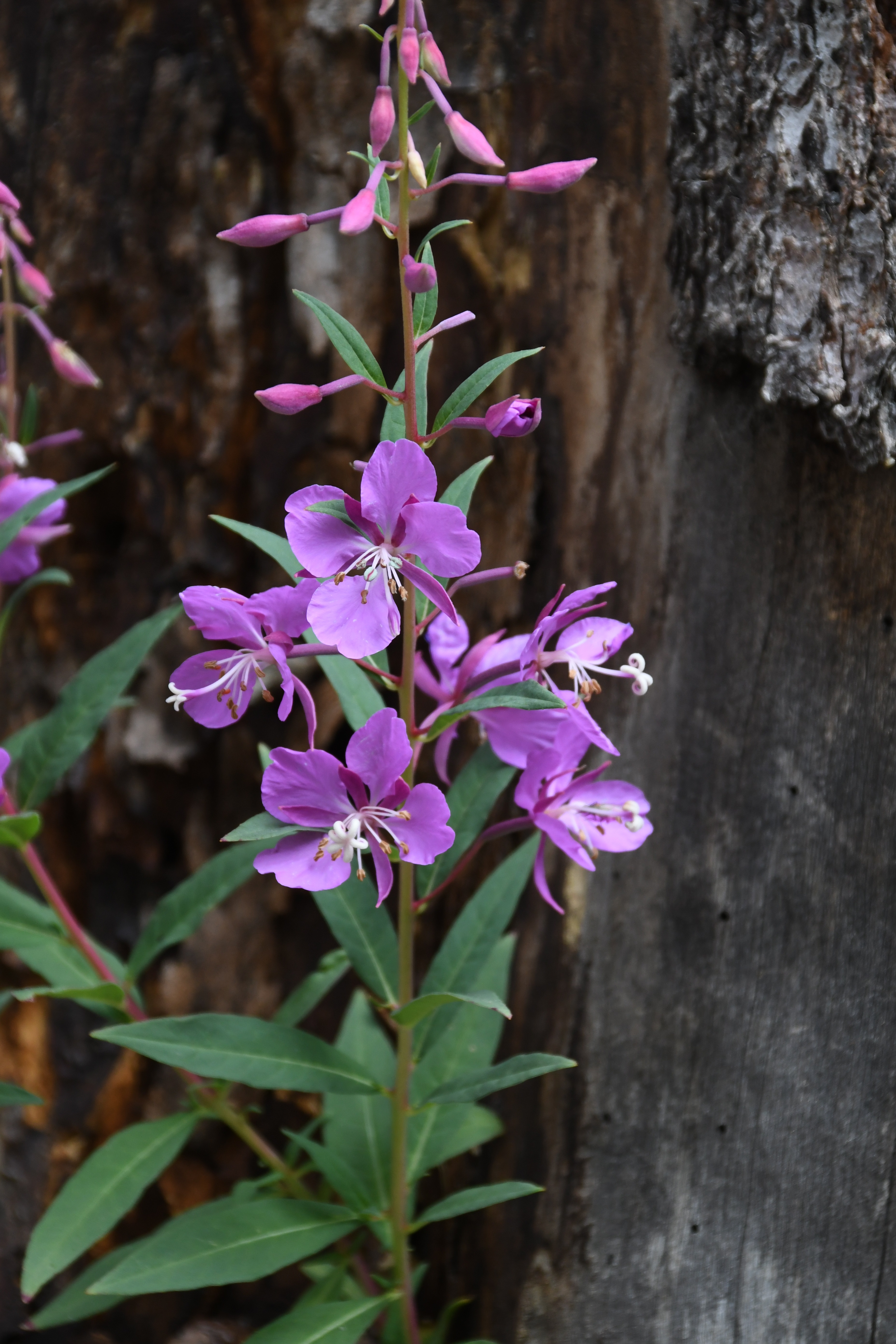The smoke was so thick that it totally obscured a hillside only a quarter-mile away. “Impossible,” I thought, peering into the opaque gray air from a lakeside cabin. “This is the Adirondack Mountains, not the Sierra Nevada.”
But the eastern United States is no longer immune to lung-clogging wildfire smoke. Last summer, wildfires in eastern Canada blanketed the northeastern United States in a toxic haze such that New York City was among the worst-rated cities in the world
for air quality. In places like the Adirondack Park in upstate New York, where tuberculosis patients used to “cure” in the clear mountain air, people like me were now spending days indoors monitoring air quality reports.
Air quality reports? If someone from that region knew of them before last summer, they had never bothered with them. But I had.
Poor air quality at my home in Red Lodge, Montana, was a big reason why I normally cherished an annual summer trip to the Adirondacks, where I could paddle and hike to my lungs’ delight. Nowadays, Montana and much of the West have only two seasons—winter
and wildfire. Twice in the last decade, out-of-control infernos burned to within a few miles of my house. But mostly we get the smoke from California, the Pacific Northwest and western Canada, carried on the prevailing winds. Relief finally comes
when the first snowfall pushes the particulates to the ground. For outdoorsy folks, it’s a dilemma. Stay inside and go stir-crazy, or venture out and cough for the next three days.
Wildfire trouble has brewed in the East for several years now. You would think that the frequent rainfall on the East Coast would tamp it down, but weather patterns have changed. Areas like the Everglades and the sub-arctic tundra in northern Quebec,
historically moist regions, are more susceptible to drought and thus wildfire. And the blazes, regardless of where they are, have become more ferocious in terms of both acreage burned and heat intensity, too much for firefighters to control and for
the average rain shower to put out.
As a result, smoke from a thousand miles away might linger in places where it didn’t a decade ago. Even in the nation’s capital, Washington, DC, residents had long, hazy periods during the summer of 2023 where smoke lingered from wildfires
in North Carolina, and then from the massive Canadian fires.
How bad is it?
 A painted trillium emerges from wildfire ashes on the forest floor in the Linville Gorge Wilderness Area in western North Carolina.
A painted trillium emerges from wildfire ashes on the forest floor in the Linville Gorge Wilderness Area in western North Carolina.
For many years after the U.S. Congress enacted the Clean Air Act in 1970 and its amendments in 1977 and 1990, we made great progress toward improving air quality. Regulations required motor vehicles and factories to spew less pollutants, allowing us to
breathe easier.
However, a 2022 study published in the scientific journal Nature found that, since the early 2000s, the western United States has lost up to 50 percent of those gains—due primarily to wildfire smoke. And Oregon and Nevada have such poor
average air quality that they have net zero gains.
“We had had so much success, and wildfires, just in five to six years, are really unraveling a lot of this progress,” said Marshall Burke, professor of earth system science at Stanford University and the study’s lead scientist, in an
interview with the Washington Post (September 23, 2023).
The study, which compiled data from across the country, showed that air quality improvement has either greatly slowed down or reversed in at least 35 of our 50 states, mainly due to wildfires. This is a national phenomenon and not one we can regulate
our way out of. You can’t fine or imprison a bolt of lightning that ignites a forest or grassland. What’s more, no two wildfires are alike in duration, intensity, acreage burned and where the smoke travels.
Effects of climate change
In a way, living with more wildfire smoke is living with climate change. According to the National Oceanic and Atmospheric Administration, as our climate warms, drought becomes more prevalent. Trees, shrubs, grasses and other organic matter are drier
and thus more flammable. Wildfires are happening more commonly in areas where they used to be rare or easier to control. For example, last summer the devastating fire that leveled Lahaina, Hawaii, moved so quickly and with such heat that it killed
97 people.
Ironically, our efforts to suppress all wildfires over the last century are contributing to their larger size and intensity. Small wildfires—typically under 1,000 acres—have been a regular occurrence for millennia and Mother Nature’s
way of renewing herself. In a forest habitat, if a wildfire occurs when plants are dormant, it’s a natural process to which native plants are adapted. The fire cleans out the conifers, allowing more sunlight in and thus enabling shrub species
and wildflowers to proliferate. However, while we heeded for decades Smokey Bear’s plea to prevent forest fires, excessive organic matter—fallen trees, leaf litter and other flammable material—has accumulated on forest floors, creating
a tinderbox.
Climate change exacerbates the problem. For every degree a region warms up, the area burned when a wildfire ignites is likely to double. The stats are staggering. This year as of October, fires have burned a total of over 317,000 acres in California alone.
During the summer of 2023, the blazes in Canada scorched nine million acres. And that’s only the tip of the torch.
How to Protect Property When Flames Flare Up
The USDA has the following three guidelines for reducing a home’s risk of burning during a wildfire based on the distance from your house:
- Zero to 5 feet, including your house:
- Use ignition-resistant (non-wood) siding, roofing, decking, vents, eaves and windows.
- Don’t store combustible items under your deck.
- Remove flammable vegetation and mulch from under and around your deck and house.
- Keep gutters and roof clear of debris.
- 5 to 30 feet from your home:
- Manage landscaping to ensure fuel sources are not continuous like a hedge. Space slows fire down.
- Remove tree branches that overhang your house or deck.
- Use metal fencing (not wood), especially if it attaches to your home.
- 30-100+ feet from your home:
- Prune trees and shrubs to keep flames lower to the ground.
- Leave space between trees and other combustibles to slow or stop the path of a blaze toward your home.
The risk of breathing in particulates
You don’t need to be in the path of a fire to suffer severe health problems from it. Another study by Marshall Burke, published in the Proceedings of the National Academy of Sciences, tracked data in California from 2006 to 2017 and found
a 30 percent increase in emergency room visits for acute respiratory issues during the week following wildfires where dense smoke blanketed an area.
 Prescribed burns can preserve or improve habitat and reduce risk. But to truly reduce the risk of large wildfires, the regulatory, financial and labor hurdles would be high.
Prescribed burns can preserve or improve habitat and reduce risk. But to truly reduce the risk of large wildfires, the regulatory, financial and labor hurdles would be high.
The long-term effects of wildfire smoke on human health are still being studied, but the initial research is sobering. For example, in 2017, Seeley Lake, Montana, was immersed for several weeks in the smoke of the unquenchable Rice Ridge Fire. Research
by the University of Montana revealed that two years later, residents had decreased lung functionality.
Another study by researchers at the University of California San Diego, that also looked at hospital admissions, concluded that breathing wildfire smoke can be up to 10 times more harmful than inhaling other air pollutants.
According to EPA, wildfire smoke is made up of a combination of gases, including carbon monoxide, hazardous air pollutants like polycyclic aromatic hydrocarbons (PAHs), water vapor and particulate matter (PM). The PM from wildfires is especially bad for
us. At 2.5 microns or less in diameter, these particles are four times smaller than a flake of mold or pollen, and about 25 times smaller than the diameter of a human hair.
When the PM produced by a wildfire becomes dense enough, the air looks hazy. That’s a warning worth heeding. Wildfire PM is so small that it can penetrate deep into our lungs and enter our bloodstream, increasing the risk of cardiovascular and respiratory
complications. The more intense the fire, the higher the danger. What’s more, these minute particles are easily borne by wind.
Wildlife and Wildfire
In general, wildfire that’s not too intense or widespread is a natural process that plants and animals in traditionally wildfire-prone areas have evolved with and depend upon for keeping their habitats healthy.
Fire affects different species in different ways, depending on the size of their home range, whether they migrate or not, in what season the fire occurs, its size and how hot it burns. For example, elk, which are generally transient, going from higher-elevation
summer range to lower-elevation winter range, might need to move faster or delay if there’s a wildfire. Small game like rabbits, reptiles and amphibians take shelter below ground.
Fish live underwater, so they’re safe from a wildfire, right? It depends. A healthy riparian area provides shade, stable banks and a constant supply of woody debris for the fish habitat. If a fire severely burns the streambanks or burns very
hot on the surrounding hillsides, it loosens the soil. If it rains, the soil, ash and sediments wash into the stream, and fish have a hard time breathing.
Some plants benefit from wildfires. “Shrubs are critically important, especially to non-game species,” says Jill Randall, Wyoming Game and Fish Department Habitat Biologist. “They love berries. Many of those early shrubs are in the
rose family, like raspberries, which re-sprout soon after a fire. These plants have adapted to fire. They take advantage of the opportunity from that disturbance.”
To habitat specialists like Randall, a fire that burns in a mosaic pattern is ideal. It clears out the old, dense conifers, allowing wildlife-friendly, diverse plant communities to flourish. Even animal species that might be negatively impacted by
the fire at first typically recover over the long term—if the plant life that grows up after fire is native to that ecosystem.
Unfortunately, not all plants that appear immediately after a wildfire are beneficial. Aggressive noxious weeds often infiltrate a forest or prairie post-inferno, which not only crowds out native plants but also makes the habitat more susceptible
to fire.
What can we do?
Two summers ago, a massive wildfire burned to the edge of my community in Montana. Mount Maurice, the peak that we can see from our living room, looked like an erupting volcano. We had no warning. Then the wind miraculously shifted, turning the fire back
on itself. Without fuel, it sputtered out. Lucky us. Many others, like in Lahaina, are not so fortunate.
The fire on Mount Maurice burned 21,000 acres. It was human-caused and preventable. A spark from a motorcycle ignited the flames.
 Fireweed, a fire-dependent wildflower, blossoms in a recently burned area near Humboldt Peak, Colorado.
Fireweed, a fire-dependent wildflower, blossoms in a recently burned area near Humboldt Peak, Colorado.
One of the cardinal rules for preventing wildfires is keeping a vehicle away from dry grass. Other rules: never leave a campfire unattended, and make sure it’s completely extinguished and cool before abandoning it.
Of course, there are naturally occurring fires, usually caused by lightning. The number-one way to prevent these potential blazes (and all wildfires) is through controlled or prescribed burns. Controlled burns also create smoke, but typically much less,
so it is worth the health risk compared to an uncontrollable inferno that incinerates everything in its path.
A bigger challenge is the scale at which controlled burns would need to occur to truly reduce the risk of wildfire. The regulatory, financial and manpower hurdles are high.
Forest thinning and forest management through logging might be another way to control wildfire, but not if downed tree trunks, branches and other unwanted parts of the trees are left on the forest floor, where they can become fuel for wildfires. Even
if great care is given to eliminating that potential fuel, scientists disagree whether forest thinning and other actions like planting native, fire-resistant and climate-change resistant trees really work.
Those who believe proper forest management reduces the risk of a catastrophic wildfire are proponents of removing trees with root rot and other evidence of disease to allow the healthier, more fire-resistant trees to grow stronger. Others say, “why
bother,” pointing to the fact that when wind and warm air dry out the flora on the landscape, a wildfire will burn it all anyway, even across clear cuts, rivers and ridgelines that previously served as fire breaks.
In recent years, Washington has recognized the staggering cost of wildfires and now devotes more dedicated resources to tackling the immediate problem of responding to fires as well as the long- term need to curb carbon emissions that contribute to climate
change.
At least for the moment, as we ponder solutions, we can breathe deeply. Wildfire season is still a few months away.
What to Do When the Air Gets Smoky
- Stay indoors with the doors and windows closed.
- Use a high-efficiency air filtration system in your home.
- Close the air-intake from the outside on your air conditioner, and make sure the filter is clean.
- Be a couch potato. Exercise raises how much particle pollution you breathe into your lungs.
- Wear an N95 mask. Lesser-quality masks don’t filter microscopic particles.
- Live healthily. If you get enough sleep, stay hydrated and eat a good diet, you’ll lessen your vulnerability.
- If you need to drive somewhere, set your vehicle’s ventilation system to the recirculation mode.
- Avoid burning candles, lighting fireplaces, using gas stoves, smoking and vacuuming, which add or stir up air pollutants inside your home.
Wildfire Can Affect Mental Health Too
Though we worry about our physical health when wildfire smoke fills the air, it’s harmful to our mental well-being, too. A study of rural counties in the United States, published in 2023 in Proceedings of the National Academy of Sciences,
found that a 10 percent increase in wildfire-produced particles in the air led to an average 1.5 percent increase in monthly suicide rates. Rural populations were the target of the study because they tend to have higher suicide rates and spend
more time outdoors.
The American Lung Association says smoke from wildfires can harm anyone nearby and even many miles downwind. Breathing smoke can shorten lives and cause heart attacks, asthma attacks and other dangerous health effects. For more information, visit
lung.org/wildfires.
| Air Quality Index (AQI) for Particle Pollution |
|---|
| Daily AQI | Levels of Concern | Values of Index | Description of Air Quality |
| Green | Good | 0 to 50 | Air quality is satisfactory, and air pollution poses little or no risk. |
| Yellow | Moderate | 51 to 100 | Air quality is acceptable. However, there may be a risk for some people, particularly those who are unusually sensitive to air pollution. |
| Orange | Unhealthy for Sensitive Groups | 101 to 150 | Members of sensitive groups may experience health effects. The general public is less likely to be affected. |
| Red | Unhealthy | 151 to 200 | Some members of the general public may experience health effects; members of sensitive groups may experience more serious health effects. |
| Purple | Very Unhealthy | 201 to 300 | Health alert: The risk of health effects is increased for everyone. |
| Maroon | Hazardous | 301 and higher | Health warning of emergency conditions: everyone is more likely to be affected. |
|
Top photo: This human-caused wildfire on Mount Maurice near Red Lodge, Montana, burned 21,000 acres, threatening our lungs as well as property. Credit: Jack Ballard.